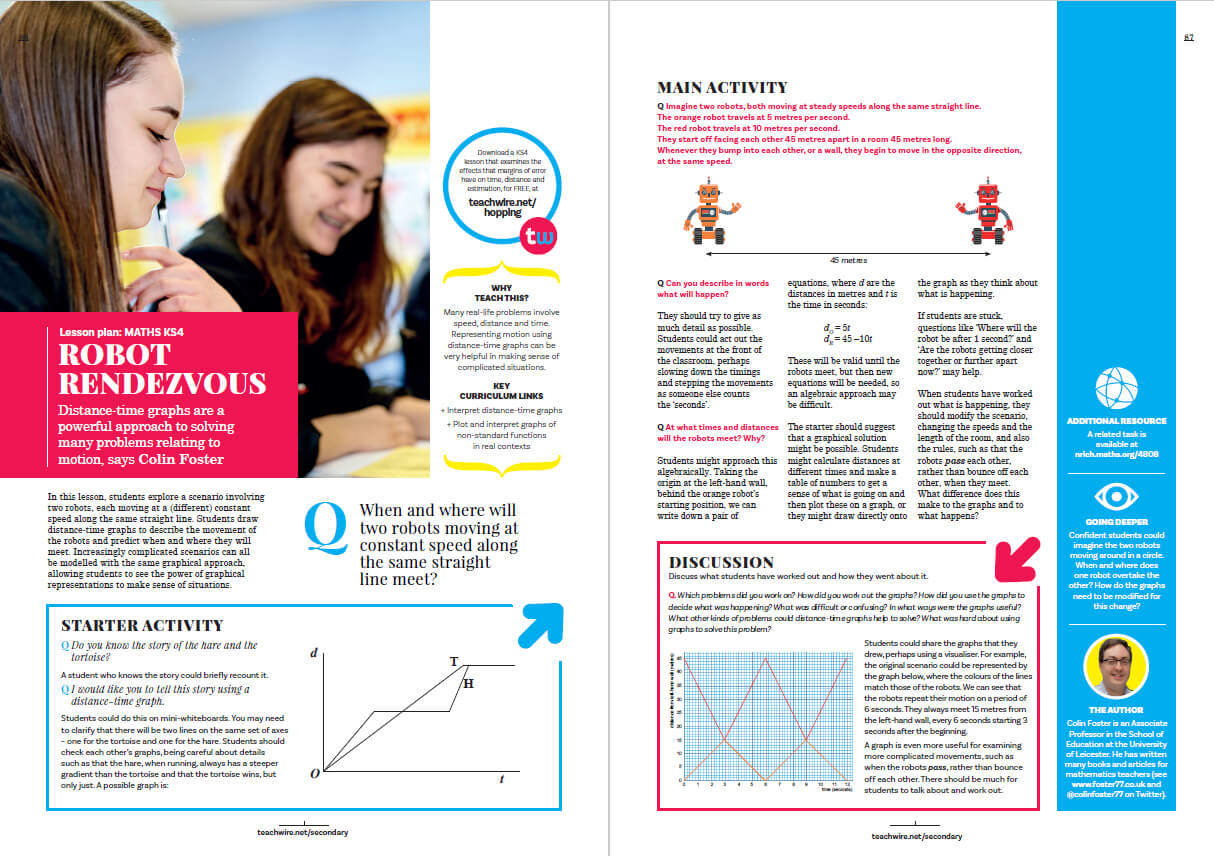Speed distance time – Maths problem to try in class, with solution

In this lesson, students learn how to work out any one of speed, distance or time, when the other two quantities are given…

- by Colin Foster
- Reader in mathematics education at Loughborough University Visit website

Speed, distance, time problem
Try this speed distance time problem in class:
A scooter travels at a steady speed of 5 km per hour. How far will it go in 15 minutes? How long will it take to travel 2 km? Another scooter travels 10 km in 1 hour and 20 minutes. How fast is it going, on average?
Students may be unsure how to answer these questions, or give incorrect answers from ‘playing around’ with the numbers, such as 15/5 = 3 km, or 2 × 5 = 10 minutes, or 10 × 1.2 = 12 km/h.
The solution
The key idea for all of these questions is that speed is a multiplier that converts time into distance: distance = speed × time. Speed is how much distance we get for each unit of time.
It can be helpful to treat this multiplicative relationship as the basis for everything, because you can get either speed or time from this equation in just one step, without needing to use ‘formula triangles’.
If you instead begin with speed defined as a quotient, then rearranging to obtain time will require two steps. Beginning with distance written as a product may therefore be easier.
Matching units
We can use this relationship to work out anything we want. We just need to make sure that the units match.
The questions we started with contained both hours and minutes, so we’ll need to work in just one of those units – say hours.
To find out how far the scooter will go in 15 minutes, we have to think of 15 minutes as 1/4 of an hour. We can work out that it’s 1/4 by writing 15/60 = 1/4 , because there are 60 minutes in an hour.
The distance travelled will therefore be 5 × 1/4 = 1.25 km. Encourage students to always sense-check their answers; the answer should be far less than 5 km, because 15 minutes is much less than an hour.
To find out how long it will take for the scooter to travel 2 km, we need to divide by the multiplier (speed), because we’re using the relationship in the inverse direction.
We work out 2/5 = 0.4 hours. To convert hours into minutes, we multiply by 60, so we obtain 24 minutes. Again, sense checking, this is a bit less than half an hour, because 2 km is a bit less than half of 5 km.
To find out the scooter’s average speed, this time we need to divide both sides of the equation by time. We turn 1 hour 20 minutes into 1 1/3 hours – not 1.2 hours, which would be 1 hour 12 minutes!
We then work out 10 ÷ 1 1/3 = 7.5 km/h. (Students may need assistance in inputting this correctly into the calculator, or doing the fraction division by hand.)
Checking for understanding
Make up 6 questions involving speed, distance and time (two requiring each of the three quantities). Make them about as difficult as the ones we’ve looked at above.
Colin Foster is a Reader in Mathematics Education in the Department of Mathematics Education at Loughborough University, and has written many books and articles for mathematics teachers. Visit his website at foster77.co.uk










